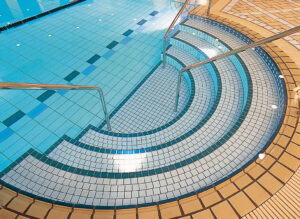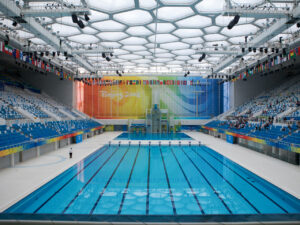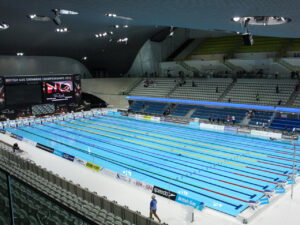Pool Tiles
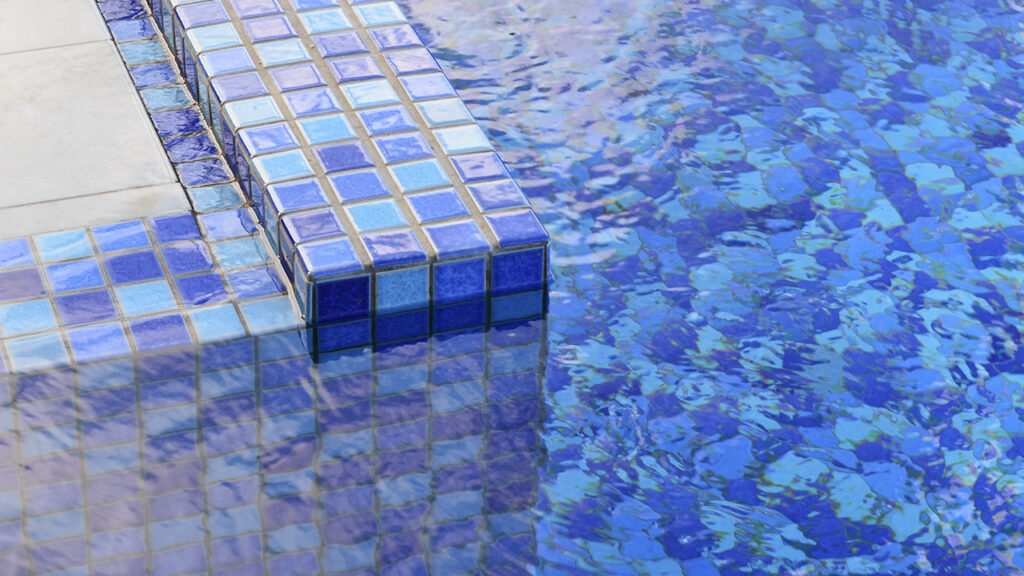
Swimming pools have always been more than just a place to cool off, they are spaces for relaxation, recreation, and style. One element that plays a key role in both function and design is the tile. Pool tiles not only protect the structure of the pool but also define its look, from the shimmering blue mosaics of a resort to the clean, precise lines of a competition pool.
In this article, we’ll take a closer look at what pool tiles are, how they developed through history, and the different types that are commonly used today. Along the way, we’ll also introduce some of our own tile collections that bring together durability, safety, and timeless design.
Table of Contents
■ What are pool tiles?
Pool tiles are specially designed, standardized, and manufactured tiles intended for use in swimming pools and poolside areas. They are built to withstand constant exposure to water and pool chemicals, while also providing safety through slip resistance and enhancing the overall aesthetic appeal of pools.
■ The history of pool tilesThe origin of pool tiles Pool tiles were introduced to Japan in the 1980s, mainly through imports from what was then West Germany. Soon after, the large-format 125×250 tiles, previously used in Olympic pools, became the standard for public swimming pools and sports clubs across the country. |
Modern pool tiles
The advantages of using those relatively large-format tiles have been widely recognized, such as a more luxurious appearance, clearer water definition, and easier swimability. However, since the 1990s, due to cost concerns and a growing emphasis on design flexibility, 100×200 size tiles and mosaic tiles have also become common, leading to a wider range of options.
Today, modern pool tiles come in a variety of textures specifically suited for wet environments, allowing for flexible applications depending on the pool’s intended use.
■ Types of pool tiles
Pool tiles come in a variety of types and sizes, depending on regional standards and specific functional needs. In Japan, the 100×200 mm module is the most commonly manufactured size, used widely in public facilities and sports clubs. In contrast, European markets, such as Germany, typically favor the 125×250 mm module as their standard.
In addition to flat tiles, special pieces with unique shapes are used around pool edges, corners, and in technical features like overflow systems. These specially designed tiles help prevent cuts or injuries when touched directly and are essential in ensuring both safety and water flow performance.
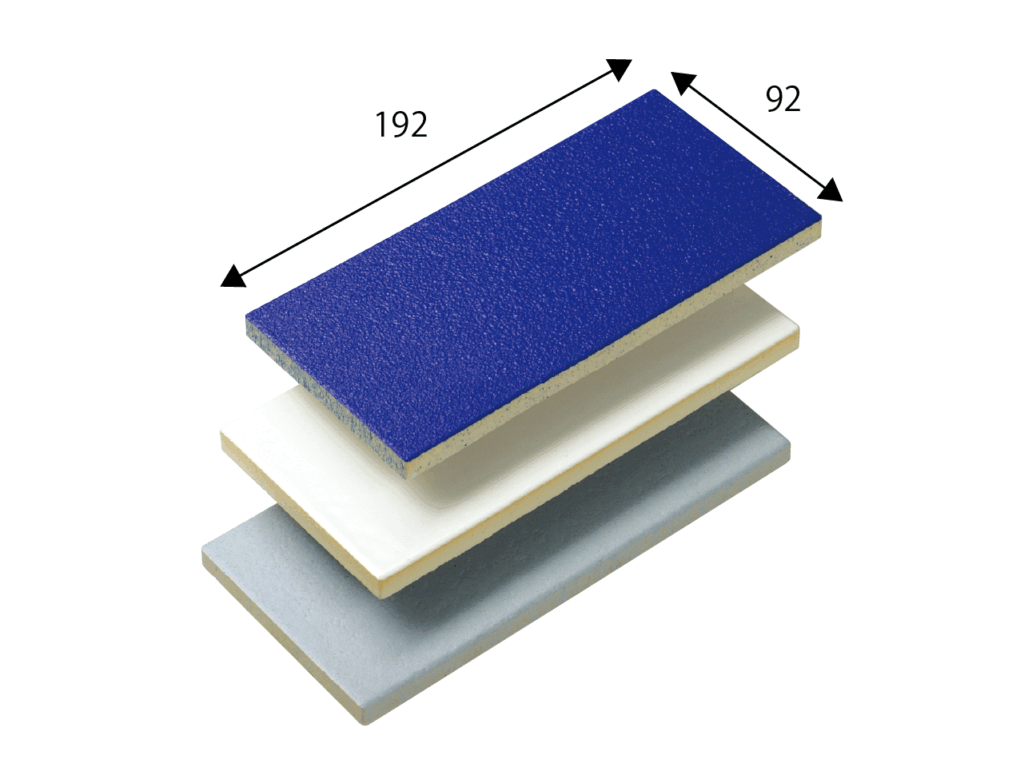
|
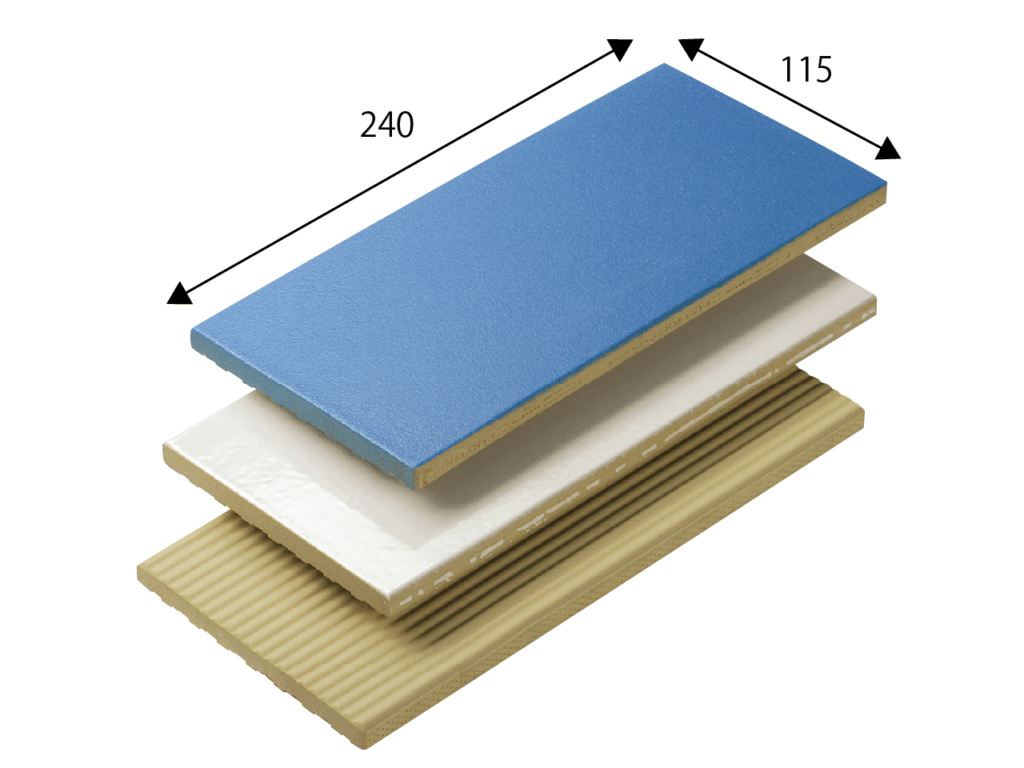
|
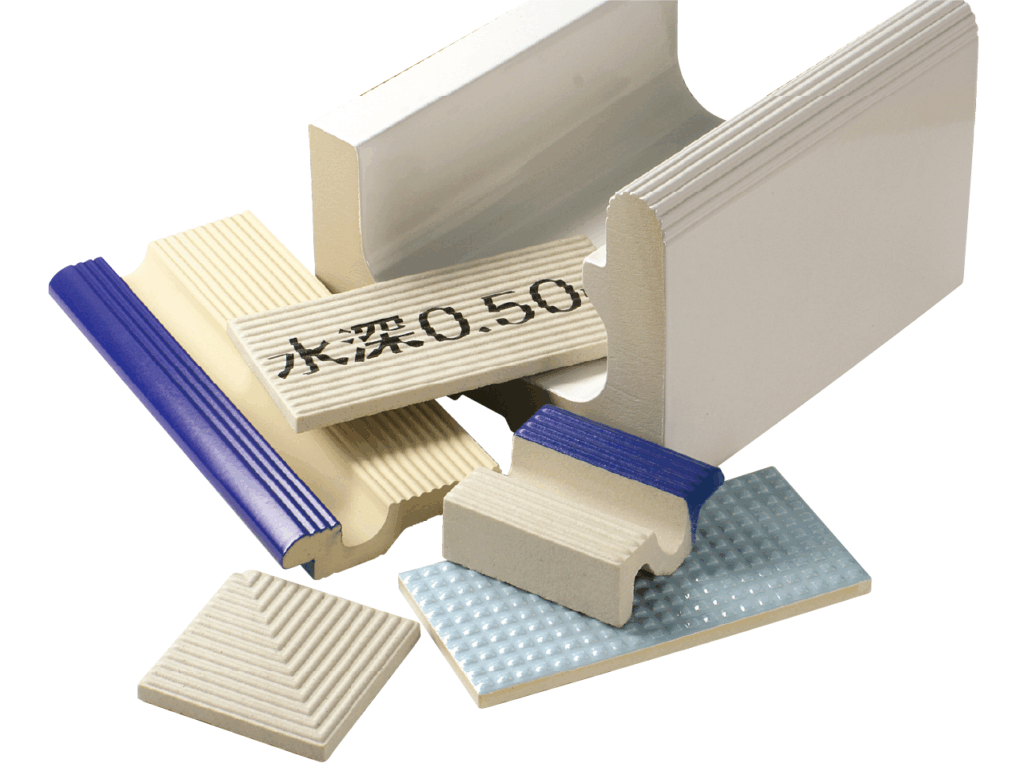
|
| 100×200 mm module | 125×250 mm module | Special Tiles |
| Pool Tiles → | ||
■ Tiles for competition pools
| The sports pools that host competitive events require tiles that meet strict standards of precision and quality to ensure safety, durability, and optimal performance.
Particularly rigorous requirements apply to the tiles used in official pools. These pools are built to host sanctioned competitions, such as the Olympic Games, and must be certified by national swimming federations. Installing these tiles requires skilled craftsmen who meticulously verify the dimensions of each piece to ensure accurate placement. Since the pool’s exact dimensions directly affect competitive swimming times, an official survey is conducted by a certified surveyor once construction is complete. If the pool and its tiles meet the federation’s standards, formal certification can proceed. |
■ Tiles for resort pools
At hotels, spas, and wellness centers, guests seek to enjoy the water and unwind in environments that offer a welcome escape from everyday life. In these elegant and inviting spaces, where aesthetic design is paramount, richly textured tiles contribute to creating a sophisticated and visually captivating aquatic atmosphere. Our Japanese tiles, thanks to the charm of their glazes and the unique character imparted by traditional manufacturing processes, stand out for their richly textured surfaces. Below, we present some of our projects and tile collections specially suited for relaxation in aquatic areas.
 |
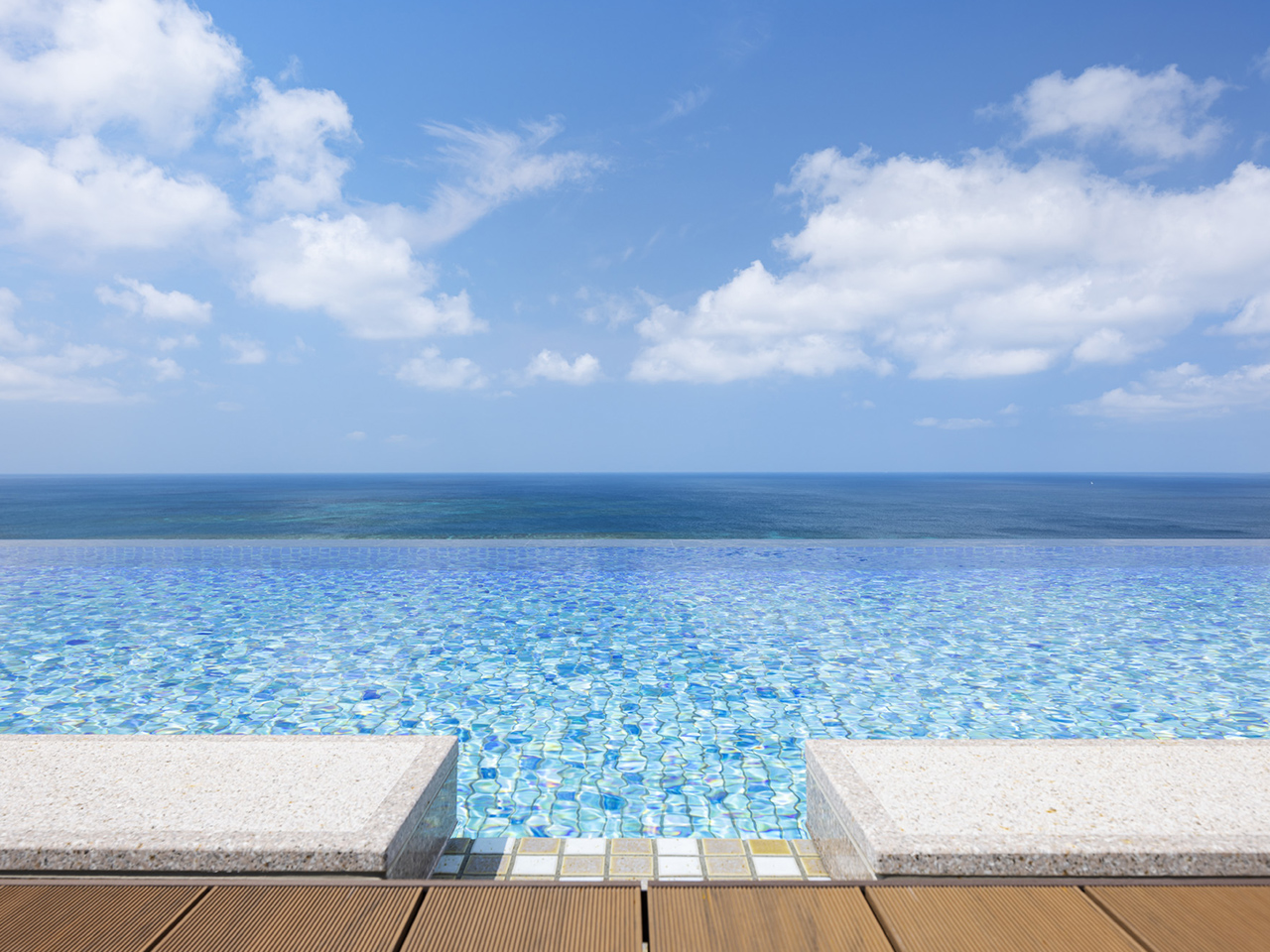 |
| Okinawa Prince Hotel Ocean View Ginowan. Design: HBA/Hirsh Bedner Associates. Photography: Masato Kawano (Nacasa & Partners Inc.). | |
| Sea Breeze → | |
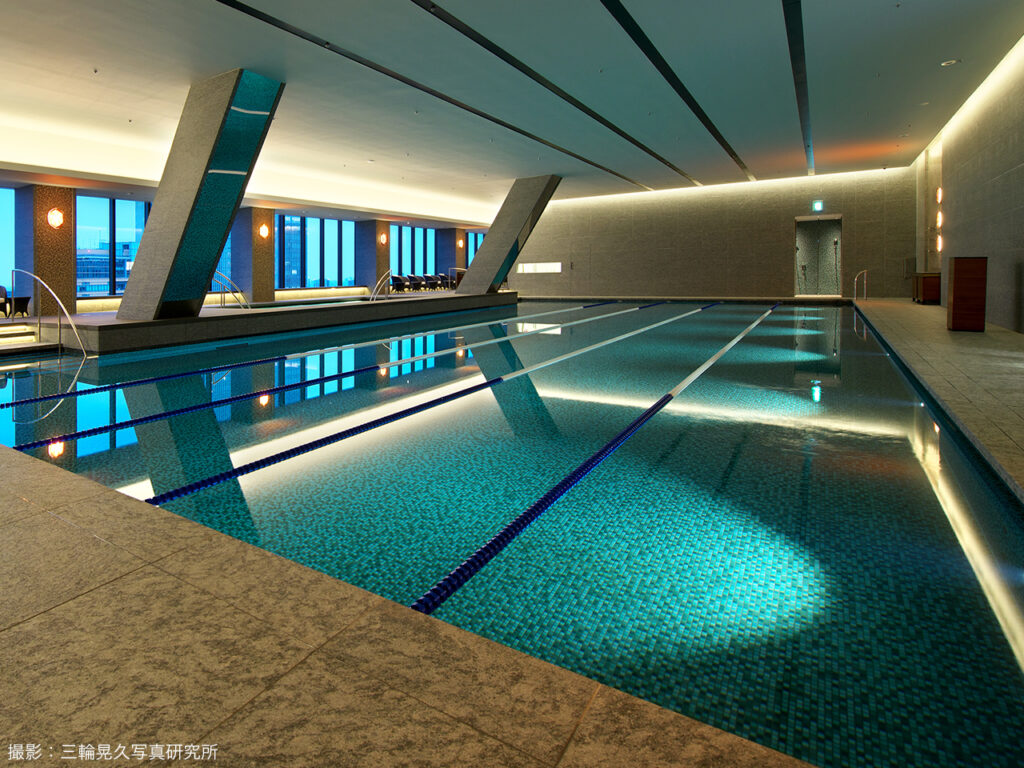 |
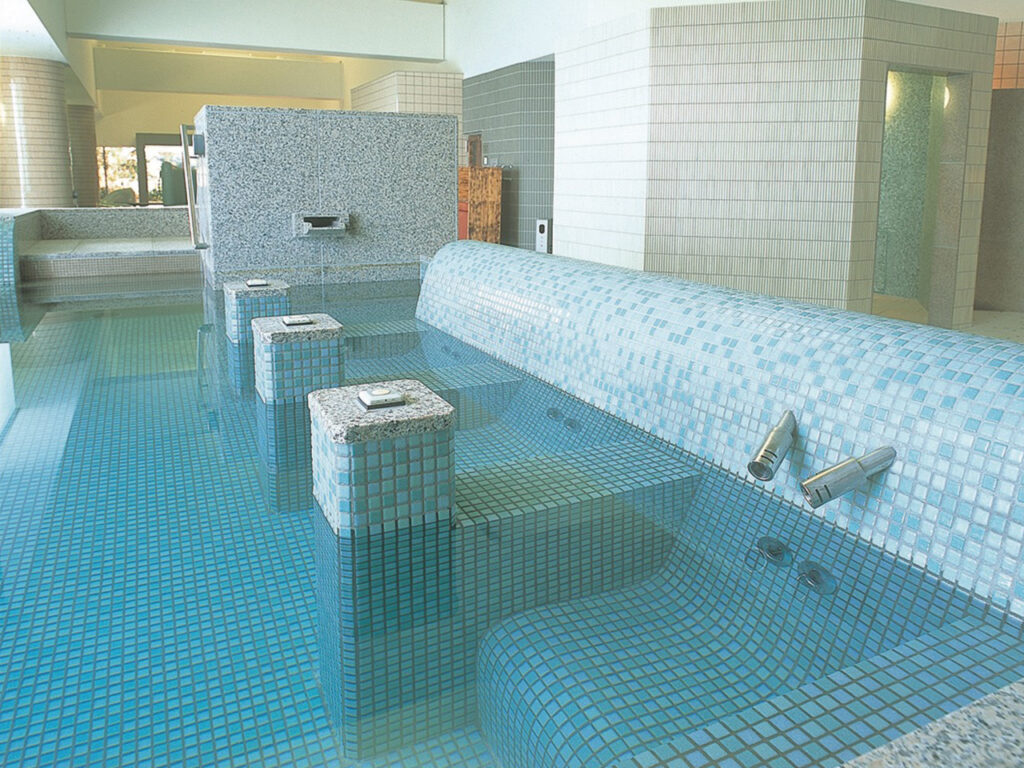 |
| The Okura Tokyo. Design: 2-10 Toranomon Planning design JV Tokyo Dome Spa LaQua. Design: Takenaka Corporation | |
| Diamant Mosaic → | |
 |
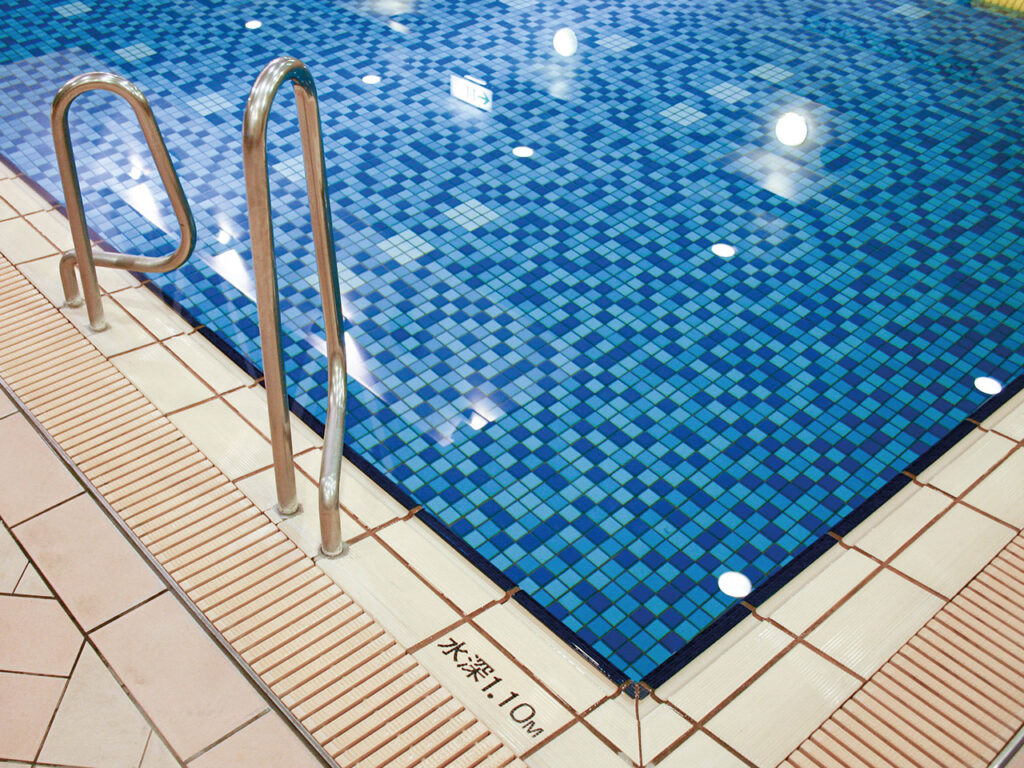 |
| Yokohama Bay Sheraton Hotel & Towers. Design: MatsudaHirata sekkei Co.Ltd. / Kankoukikaku sekkeisha Co.Ltd. | |
| Diamant Floor → | |
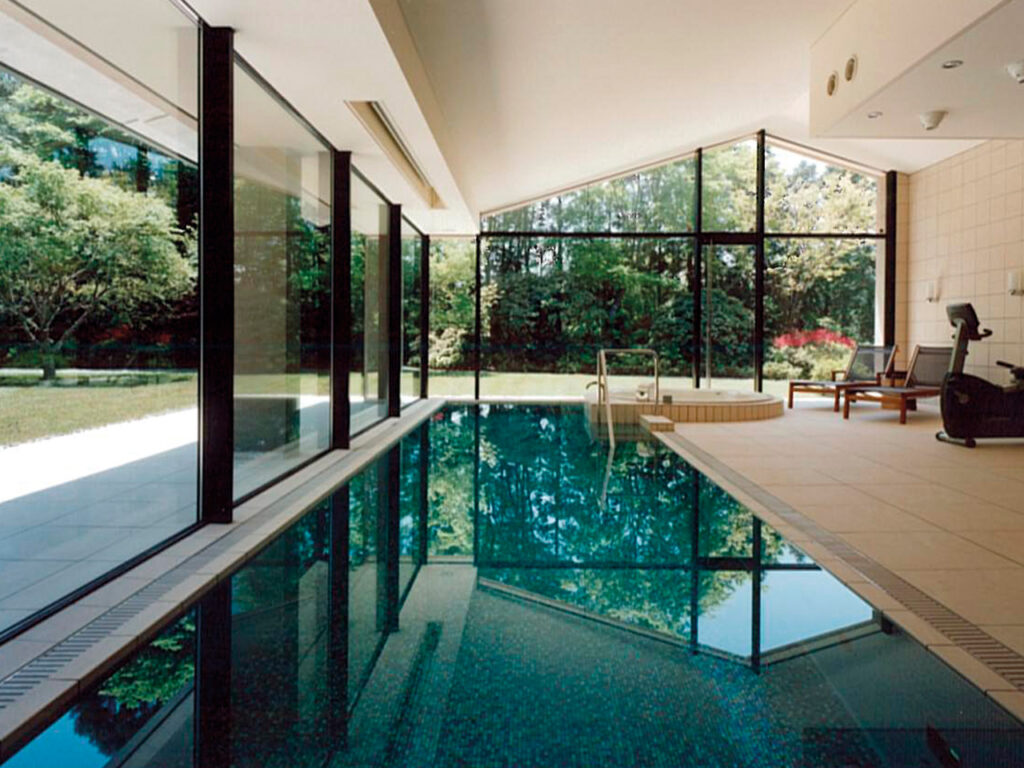 |
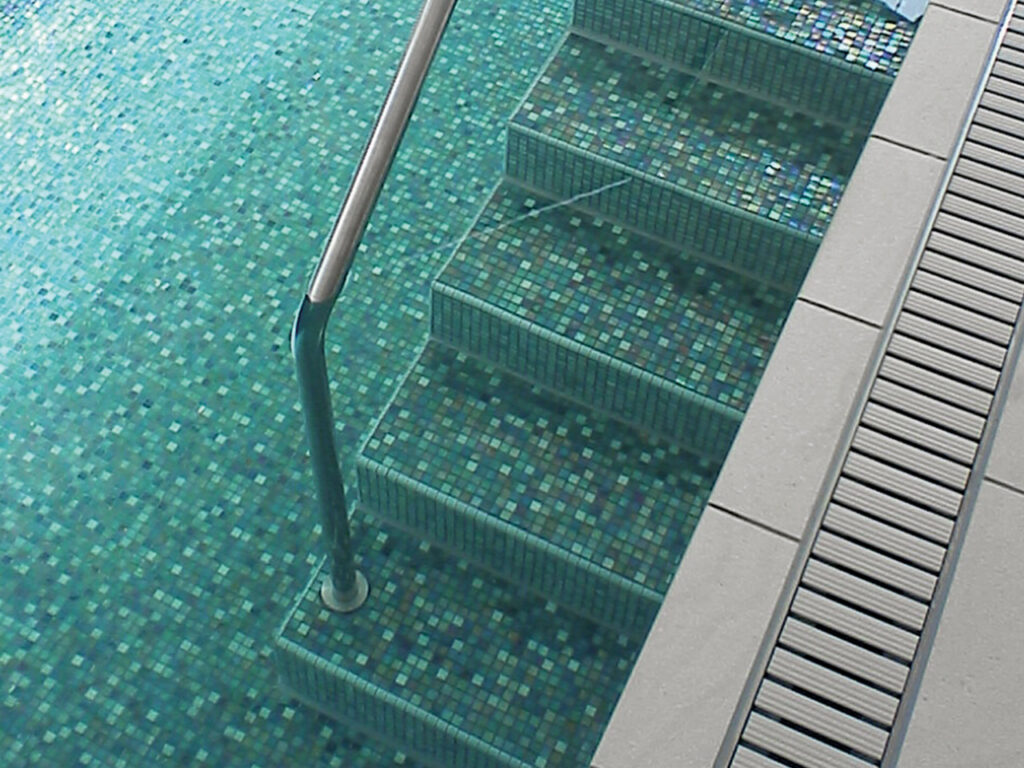 |
| Hakone Kojin Residence. Design: Takenaka Corporation Hakone Kojin Residence. Design: Takenaka Corporation | |
| Mono Mosaic → | |
■ Summary
In this article, we examined what pool tiles are, their functional requirements, and the main formats used in different regions. We looked back at their historical evolution and how design trends have shifted over time. Special attention was given to pools focused on relaxation, like resort pools, where smaller, richly textured tiles are becoming increasingly popular. In this context, Japanese tiles stand out for their unique glazes and traditional craftsmanship.
